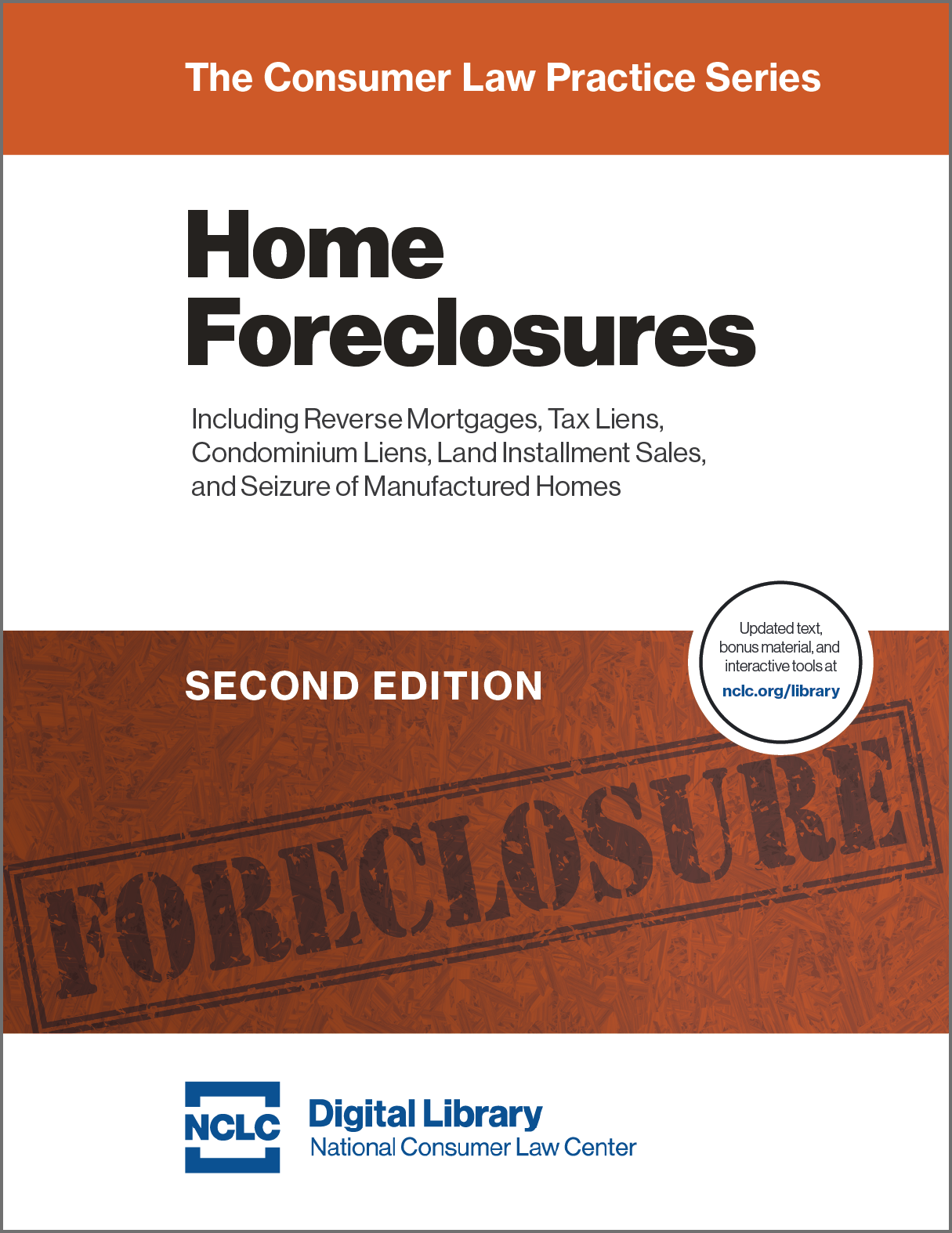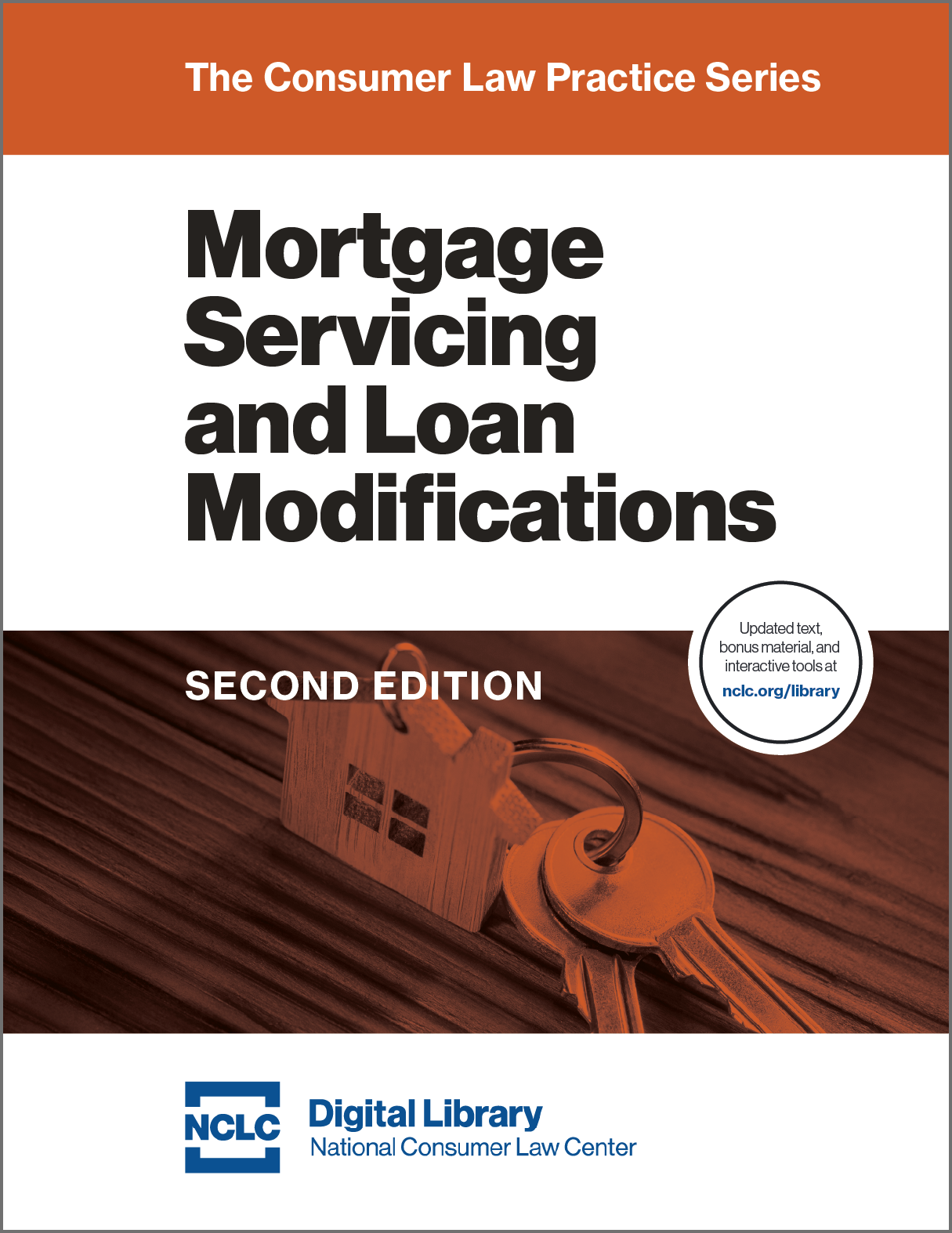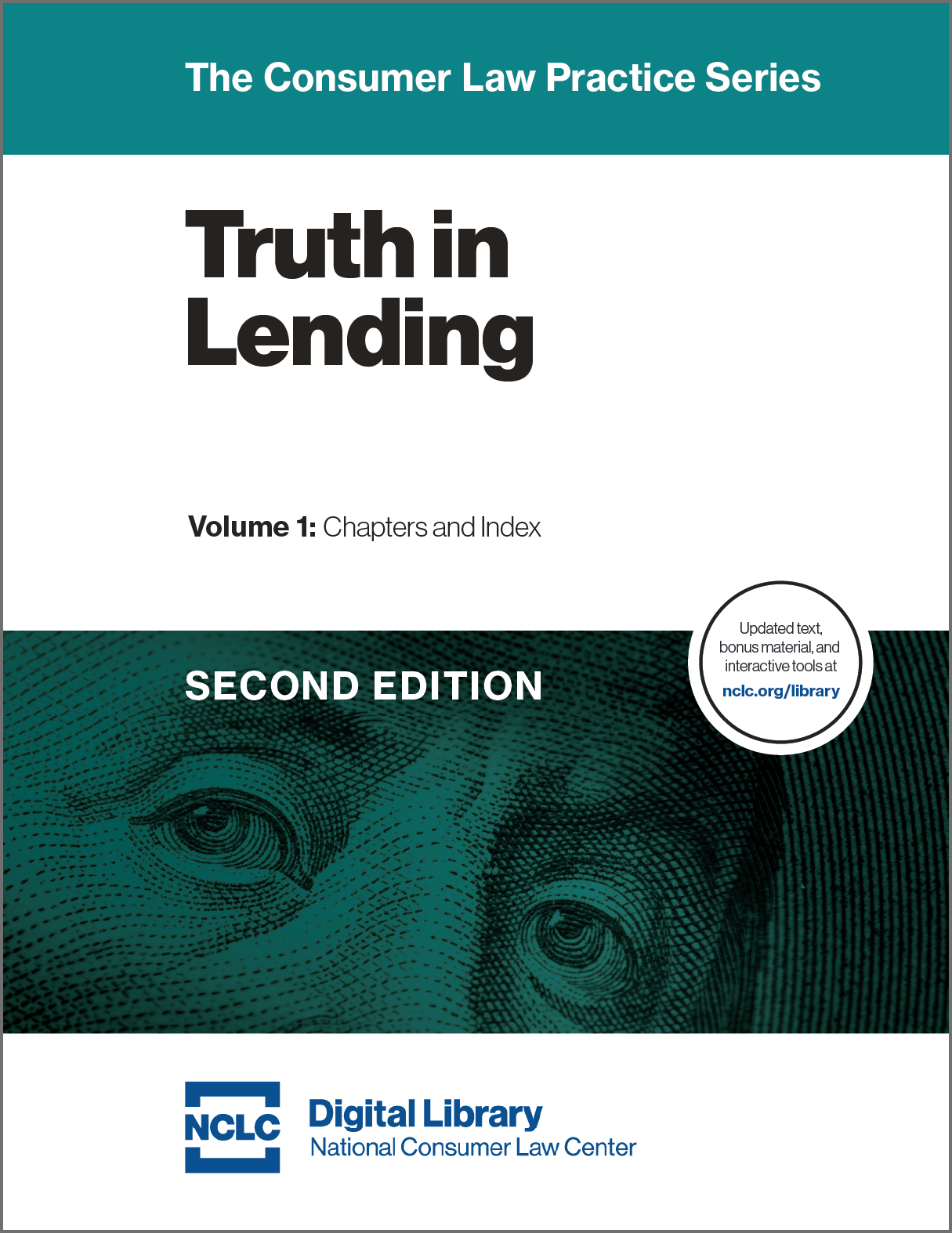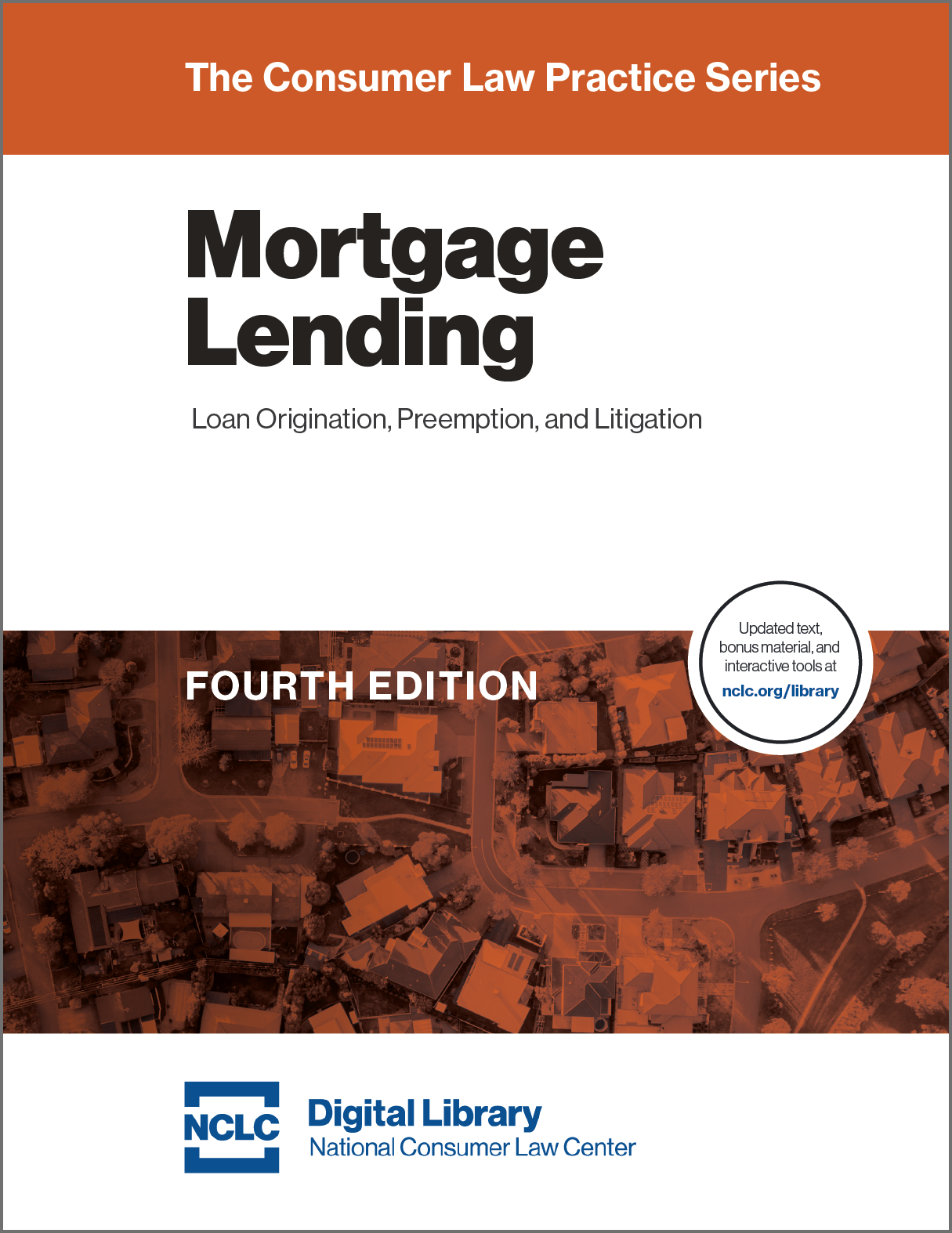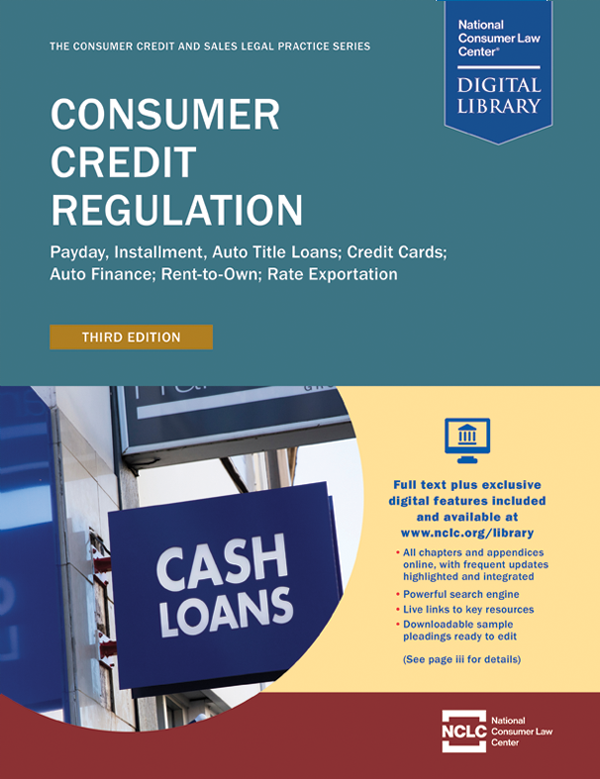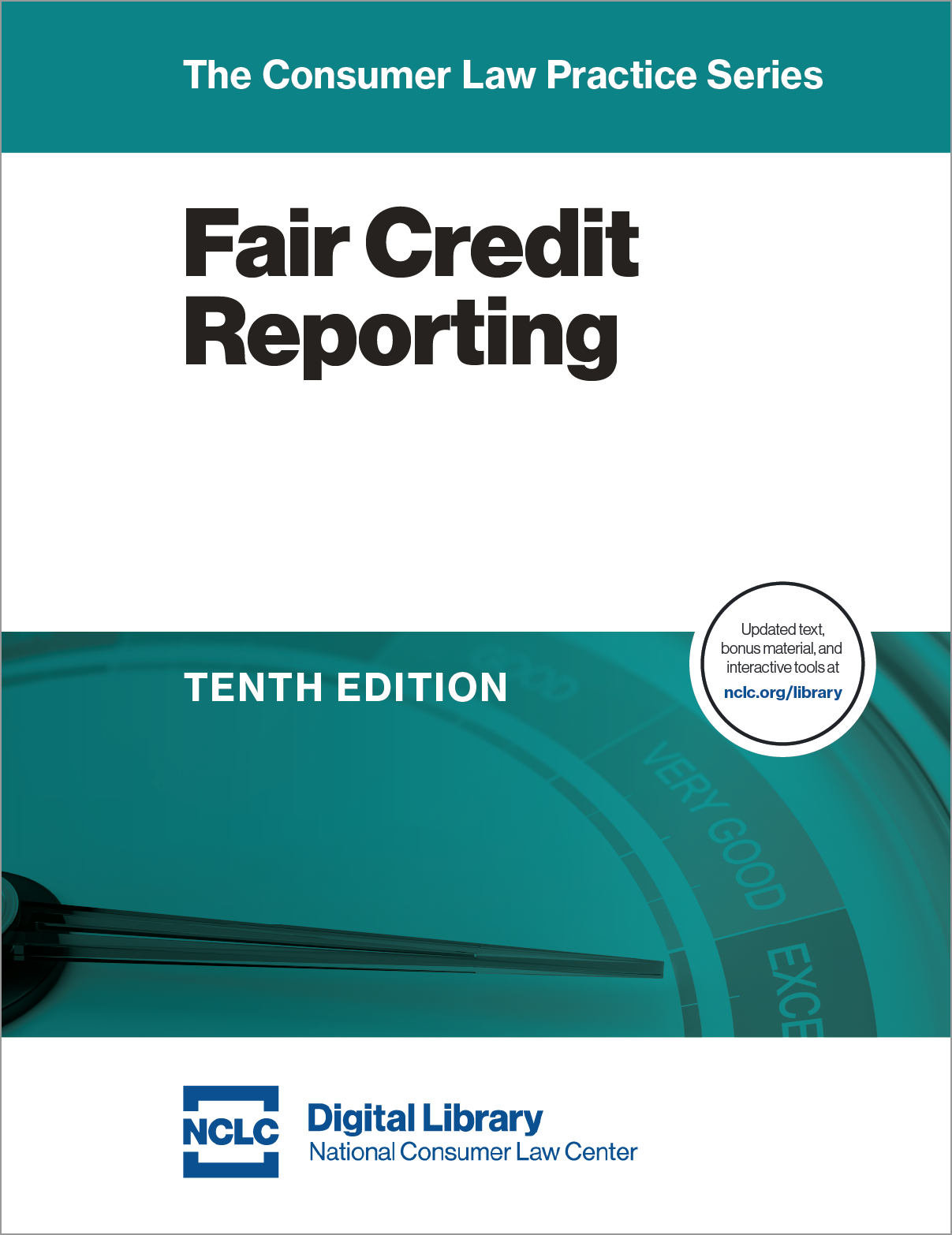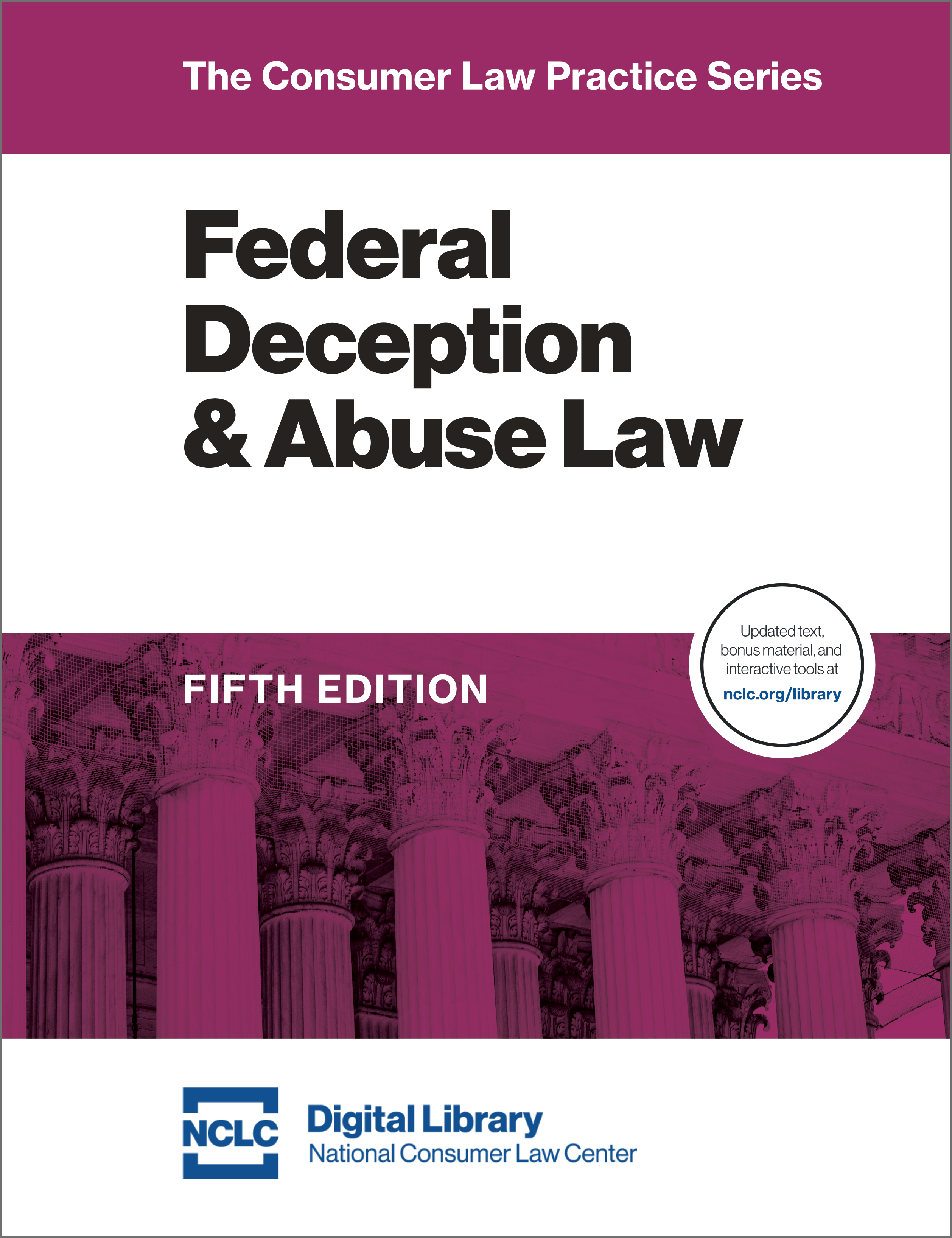Search
A Reverse Mortgage Primer: Consumer Debt Advice from NCLC
How to Prepare for the End of HAMP
March 21 Deadline for Servicers to Assign to HUD Certain Reverse Mortgages to Protect Surviving Spouses
Mortgage Relief for Homeowners Affected By COVID-19
New Protections from Foreclosure of Reverse Mortgages
A May 6th HUD guidance provides new protections allowing non-borrowing spouses to remain in a home after the spouse borrowing on a reverse mortgage moves to a long-term care facility or passes away. This article details the new protections, examines other foreclosure risks with a reverse mortgage, and sets out borrower rights and strategies to avoid those additional risks of foreclosure.
Image
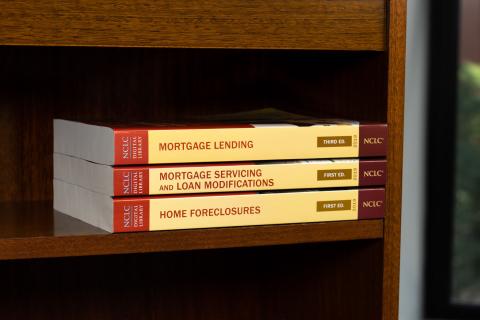
New CFPB Rule Protects Homeowners Facing Foreclosure
This article explains in detail important CFPB amendments to RESPA Reg. X taking effect August 31 affecting mortgage servicer early intervention and loss mitigation requirements. The rule provides new rights to homeowners exiting mortgage loan forbearances or experiencing a COVID-related payment hardships—rights applicable not just to federally insured mortgages, but to almost every home mortgage in America.
Homeowner Tactics to Overcome Problems with Tangled Titles
A new NCLC Digital Library article sets out practical solutions to problems arising from a homeowner's death in dealing with mortgages, foreclosures, reverse mortgages, property taxes and tax sales, utilities, and relief after natural disasters. The advice focuses where a home’s title is tangled—the home is stuck in probate or families living in a home for generations have never properly transferred the home’s title.
LIBOR’s Death Will Soon Impact $1.4 Trillion in Consumer Contracts
The most widely used index for adjustable-rate consumer contracts, the LIBOR, will soon cease to exist. This article explains new legal requirements that will apply when creditors are forced to change the index and margin on $1.4 trillion of adjustable-rate consumer contracts—millions of home mortgages, home equity lines of credit (HELOCs), credit cards, and private student loans.
Image
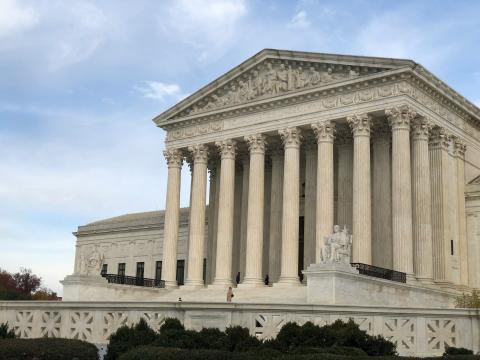
Consumer Litigation Guide to Supreme Court Rejection of Chevron
Two just-decided Supreme Court rulings facilitate industry challenges to federal agency rules. This article examines the implications of these decisions for consumer attorneys bringing federal rule-based claims where defendants now argue the rule is invalid or inapplicable. The article recommends eight steps to respond to these Supreme Court decisions to preserve the consumer’s claims.
